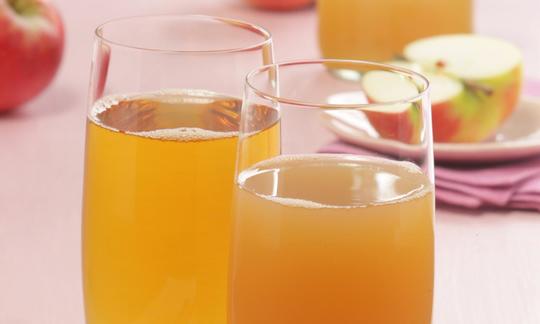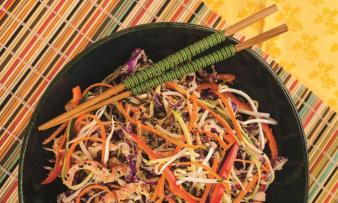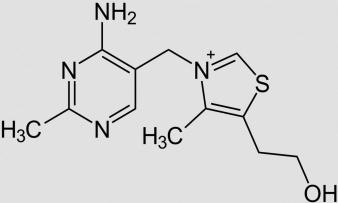Table of contents
Pressing apples produces unsweetened apple juice (without additives). The popular fruit juice is naturally cloudy or clarified, organic and unpasteurized (hence raw ). available, but mostly sold pasteurized.
Using apple juice in the kitchen:
Apple juice is one of the most popular fruit juices, which can be drunk pure or mixed with water and with or without carbonation. Apple juice diluted with water is called apple juice spritzer, apple spritzer or sparkling apple juice. Depending on the type of apple used, the apple juice tastes fruity-sweet to sour and naturally contains sugar .
Apple juice is used to refine sauces, dressings (marinades, vinaigrettes), cakes, baked goods or desserts such as pudding, ice cream, fruit salad, compote or puree. Syrup, smoothies or cocktails can also be flavoured with apple juice or it can be used to sweeten and cool tea. Apple juice as a punch is a good alternative to the classic orange punch or other hot drinks.
A dash of apple juice also gives spicy dishes such as steamed white or red cabbage, curry sauces, soups, stews, tomato sauces, etc. a sweet and fruity note (instead of a pinch of sugar ).
Using gelling sugar, you can make apple jelly from apple juice - or you can boil it down to make apple syrup . If you ferment the natural, cloudy juice, you get apple wine or apple must (with alcohol content), and if you ferment it further you get apple cider vinegar .
Vegan recipe for bulgur with apricot-apple sauce:
Ingredients (for 4 people): 4 raw apples (organic), 150 ml apple juice (organic), 75 g dried apricots , 250 g bulgur , 500 ml plant milk (e.g. oat milk ), ½ teaspoon salt , 2 tablespoons sugar (or less), 75 g nuts (mixed, e.g. walnuts , macadamia nuts ).
Preparation: After washing and peeling the apples, remove the core and cut into pieces. Cut the apricots into strips. Put the apples, apricots and apple juice in a saucepan, bring to the boil and simmer for another 15 minutes at a reduced heat. Then puree the mixture and leave to cool. Put the bulgur with sugar, salt and plant milk in another saucepan and simmer for 10 minutes (you can also leave out the sugar). Add chopped nuts to the cooked bulgur and then serve with the warm apricot-apple sauce.
Tea preparation - apple punch with apple juice:
You can make a (vegan) warm apple punch from fresh apple juice. You will need one liter of apple juice (organic), 250 ml of water, a handful of raisins , 2 lemons , 1 cinnamon stick, 2 cloves and, depending on your taste, sweeteners such as sugar , honey , agave syrup , maple syrup , etc. Boil the water with the raisins, cinnamon stick and lemons (cut into slices) and let the whole thing steep for about 15 minutes. Add the apple juice and cloves and heat everything up again briefly. You can now pour the punch over a sieve and sweeten it as desired.
Vegan recipes with apple juice can be found under the note: " Recipes that have the most of this ingredient ".
| Not only vegans or vegetarians should read this: Vegans often eat unhealthily. Avoidable nutritional mistakes . |
Shopping - where can you buy unsweetened apple juice without additives?
You can find apple juice without sugar, i.e. without additional sugar, at major retailers such as Coop , Migros , Denner , Volg , Spar , Aldi , Lidl , Rewe , Edeka , Hofer - usually also in organic quality (bio). Health food stores, organic shops, organic supermarkets (such as Denn's Biomarkt or Alnatura ) and delicatessens often also sell apple juice as natural and unpasteurized direct juice (raw, organic, cloudy, with no added sugar). Pasteurized apple juice is available in drugstores or online.
When shopping, please always read the ingredients on the packaging: In addition to natural, pure apple juice (direct juice), you can also buy apple juice from concentrate or apple nectar, as well as apple juice drinks. With the exception of direct juice, most products are pasteurized (not raw). There is also apple juice with added vitamin C, which must be clear in the ingredients list.
You can also buy apple juice cloudy (naturally cloudy), i.e. with suspended matter, or clear. Clear juice is filtered (in the case of organic quality only through paper, in conventional quality also with additives) and often clarified. Often clarified with gelatine - therefore these juices are not vegan. 22
Direct juice consists of 100% apples, usually produced locally (and often organic). For 1 liter of direct apple juice, you need about 1.5 kg of apples. Apple juice from concentrate is also 100% apple juice, but it is concentrated, i.e. water is removed using a lot of energy. The concentrate is diluted with drinking water before being sold. 1 According to the Fruit Juice Ordinance (EU) 2 and the Ordinance of the Federal Department of Home Affairs (CH) 3 , direct juice sold as fruit juice may not contain any additional sugars, not even to "correct" highly acidic fruits.
In addition to at least 50% apple juice 1 , apple nectar also contains water, sugar (honey or other sweeteners up to 20%) 2,3 or flavourings. Apple juice drinks must contain at least 30% apple juice; there is no upper limit for the sugar content. 1
Making your own apple juice (unsweetened, without additives):
There are various options for making your own vegan apple juice (cloudy): If you have a fruit press, you can press the washed, whole (not rotten) apples directly or have them pressed to get raw direct juice. A juicer is also suitable for smaller quantities. To increase the shelf life, heat the juice in a larger pot and pour it into sterile bottles (no longer raw afterwards).
You can also make unsweetened apple juice without a juicer: cut 2 kg of washed, cored apples into small pieces, put them in a pot with about 1 liter of water and boil for about 20 minutes. Then puree the mixture and pour it through a sieve or cotton cloth, and add lemon juice to taste. Now heat for another 20 minutes (do not boil until it bubbles), stir and pour into cleaned bottles. This variant is not raw food.
Storing apple juice without added sugar:
Since the vitamins contained in unsweetened apple juice are sensitive to heat and light, the bottles should be stored in a cool, dark place. 1 Once opened, store-bought juice can be kept at room temperature for a maximum of seven days, or in the refrigerator for up to two weeks. Homemade juice (raw) should be consumed within three days. 4
Apple juice ingredients - nutritional values - calories:
How many calories does cloudy apple juice have? Unsweetened, untreated apple juice without additives has 46 kcal per 100 g. These sweet juice calories come mainly from carbohydrates (11 g/100g). Does apple juice contain sugar? The natural sugar content of apple juice is around 9.6%, which is comparable to the sugar content in apples (10 g/100g). 5
The nutrient content in apple juice is not very high. The most important nutrient is potassium at 101 mg/100g, which covers 5% of the daily requirement. The amount can be compared with that in lemon juice , apples or pears . Apple cider vinegar contains even less potassium due to further processing (73 mg/100g), while concentrated apple syrup contains 735 mg/100g. Green kiwis also contain significantly more potassium when raw at 312 mg/100g. 5
Vitamins: The amount of B vitamins, such as thiamine (vitamin B 1 ) at 0.02 mg/100g, is comparable to peaches , strawberries or grape juice . Oranges contain more of these (0.1 mg/100g). The content of pantothenic acid (vitamin B 5 ) is at 0.05 mg/100g, similar to that in grapes or lamb's lettuce , and blackcurrants have more (0.4 mg/100g).
Does apple juice contain vitamin C? The vitamin C content in apple juice is around 0.9 mg/100g and is lower than in apples (4.6 mg/100g) due to the processing. For kiwis (93 mg/100g), 100 g cover 116% of the daily requirement. 5
Calcium is only present in small amounts. The ingredients contained in apple juice depend not only on the variety but also on the ripeness of the apples.
The complete ingredients of apple juice, the coverage of the daily requirement and comparison values with other ingredients can be found in our nutrient tables. In the article Nutrients explained you will get a detailed insight into the topic.
Health aspects - effects:
Is cloudy apple juice healthy? Some ingredients in raw apples and apple products have been shown to have a positive effect on the intestines in animal models. Secondary plant substances, which are mainly found in the outer layers, are said to counteract the development of colon cancer, contribute to detoxification and inhibit the release of harmful oxygen compounds. 7 Polyphenols in particular activate detoxifying enzymes in the body and are said to reduce not only cancer but also diabetes and cardiovascular diseases. 6 You can find out more at: A comprehensive overview of the role of apple polyphenols .
The flavonoids contained in fruit and vegetables are said to have a detoxifying effect, catechins an anti-inflammatory effect and procyanidins (chains of catechins) an antioxidant effect. 7,8 In addition to a very strong antioxidant activity, apples are also said to lower cholesterol levels. The phytochemicals contained in apples vary greatly depending on the variety and ripeness of the fruit. 9 Find out more about the antioxidant activity of fresh apples here.
Naturally cloudy apple juice (raw) contains more of the beneficial substances, which is why it is preferable to clear juice. Some of the flavonoids (e.g. glycosides of quercetin) remain in the press residue when apple juice is made. 10 Raw fruit usually contains more of these. 11
Dangers - intolerances - side effects:
If there is inflammation in the intestines, apple juice can make it even worse. A healthy colon, on the other hand, benefits from drinks made from and with apples. 7
Sugar content in apple juice: The sugar content of apple juice promotes the development of tooth decay when consumed frequently and the acid contained in the juice damages tooth enamel. 12 For these reasons, children in particular should not drink too much apple juice and should never drink it (diluted or undiluted) from a bottle.
The number of calories apple juice actually contains (calorie content) should not be underestimated. Therefore, you should limit your daily intake to one glass of apple juice. By diluting it with water, you can easily reduce the sugar in apple juice, so that the calories in apple juice spritzer are only half or less. Therefore, apple juice is healthy if you only consume it in small quantities, like any other juice.
Fruit juice is generally not suitable for people with fructose intolerance (fructose malabsorption) or hereditary fructose intolerance, including apple juice. But even for healthy people, half a litre of apple juice (contains approx. 32 g fructose) is the maximum tolerable amount: high consumption can cause stomach pain, flatulence or diarrhea. 13
Folk medicine - naturopathy:
Apple juice as a natural remedy is said to stimulate digestion and strengthen the stomach lining. Recipes using freshly grated apples to treat digestive disorders are also well known. 14
Diluted apple juice helps to compensate for fluid loss in children due to diarrhea. 15
Occurrence - origin - ecology:
The most commonly sold apple juice is conventional juice from concentrate and comes from international manufacturers, mainly from China. In Europe, the concentrate comes primarily from Poland. Direct juices are mainly from regional cultivation and production. The storage and transport of must (fresh) are significantly more complex than with concentrates. 16
Ecological aspects:
Organic producers also offer juice made from apples from orchards, which promotes regional nature conservation. However, it is not always available in stores as controlled organic juice. 17
The enzymes used in industrial production are proteins that are produced using a biotechnological process. Since more and more companies are also using genetically modified microorganisms that produce these enzymes, this production process is repeatedly the subject of critical debate. 21
Industrial production:
To produce apple juice, the apples are washed and sorted and then crushed in a mill or a cutter. Fruit that has been stored for a longer period is depectinized using enzymes (e.g. pectinases, cellulases, hemicellulases) to break down the fruit cells and obtain more juice. The mash is pressed in a juicer with a pressure of 5-20 bar. The juice yield from apples is around 75%; with enzyme treatment, this can be increased to around 95%. The raw juice is then centrifuged and pasteurized. 17
The apple juice still contains a lot of cloudy substances with a very high pectin content. In this form, it can be bought as naturally cloudy or cloudy direct juice. These cloudy substances are usually not evenly distributed and settle to the bottom after a short time, which many consumers do not like. Cloudy juice is often made from concentrate and treated with specially prepared filter residues to achieve perfect cloud stability.
Clarifying apple juice: How does apple juice become clear? To make clear juice, you have to depectinize, clarify and filter it. Apple juice ingredients such as enzymes and gelatine are used for fining and filtration when heated to approx. 40-60 °C ( no longer raw ). The breakdown of pectin allows the cloudy substances to flocculate and the juice can then be clarified and filtered more easily. Fining is done using tannin or silica sol-gelatine mixtures (so often not vegan ). Since these additives are then removed again, they do not appear on the list of ingredients. 1,17,22 For vegan juice, bentonite (clay minerals) is used or it is just filtered. 20
Clarification is often also carried out in ultrafiltration machines, where the juice is pressed through membranes. This removes microorganisms and their spores. The sterile juice is important for the production of concentrate (freeze concentration or low-temperature evaporation). 17 Before sale, the juice is reconstituted from concentrate, water and aroma (reconstruction). Then the same steps follow as for direct juice (depending on the type of juice, filtering, pasteurization to 85 °C, bottling). 19 Fruit juice from concentrate must always be labeled. Pasteurizing apple juice: Machines such as pasteurization systems (pasteurizers) are used for this.
The declaration rules for apple juice vary in many countries. The use of additives also depends on the guidelines that manufacturers follow. Corrective sugaring is no longer permitted. 2,3 Organically produced apple juice is often not filtered (i.e. naturally cloudy) because organic producers prefer not to do this. In Austria, organic juices must be declared as to whether the apples come from Austria, the EU or third countries. 16 Depending on the country, organically certified apple juice producers are allowed to produce concentrates. For example, the EU Organic Regulation 17 allows this, but according to Bio Suisse , only organic spritzers can be made from juice concentrate. 18 According to the guidelines of the German Association for Organic Farming ( AGÖL ) and the Federal Association for Natural Food and Natural Products ( BNN ), the production of organic juices from concentrate is not permitted. 17
General information:
In Germany, apples are usually processed 100% when producing apple juice. This yields around 75% juice. The press residues (remaining 25%) are suitable for composting, as animal feed (dried) or for producing pectin. 17 The natural sugar content of apple juice depends greatly on the type of apple used.
Alternative names:
In Switzerland, apple juice is often called Apfelmost or Süssmost, but in Austria, Apfelmost means fermented apple juice (with alcohol), i.e. sour must. In the area around Frankfurt am Main, unpasteurized, fresh and cloudy apple juice is called Süsser. Incorrectly spelled versions can be found as Apfel Saft or Apelsaft (sugar in apple juice). In addition, in German-speaking countries, outside of Switzerland, the spellings unsweetened Apfelsaft or Apfelsaft unsweetened are known.
In English, apple juice is called apple juice or cider, although in Central Europe the latter refers more to apple wine or sour apple must. Juice without added sugar is translated as unsweetened juice. Cloudy apple juice is known as cloudy apple juice and apple juice without additives as apple juice without additives.
Keywords for use:
Apple juice is used in cosmetics as a tonic against sagging skin. 14
Literature - Sources:










Comments